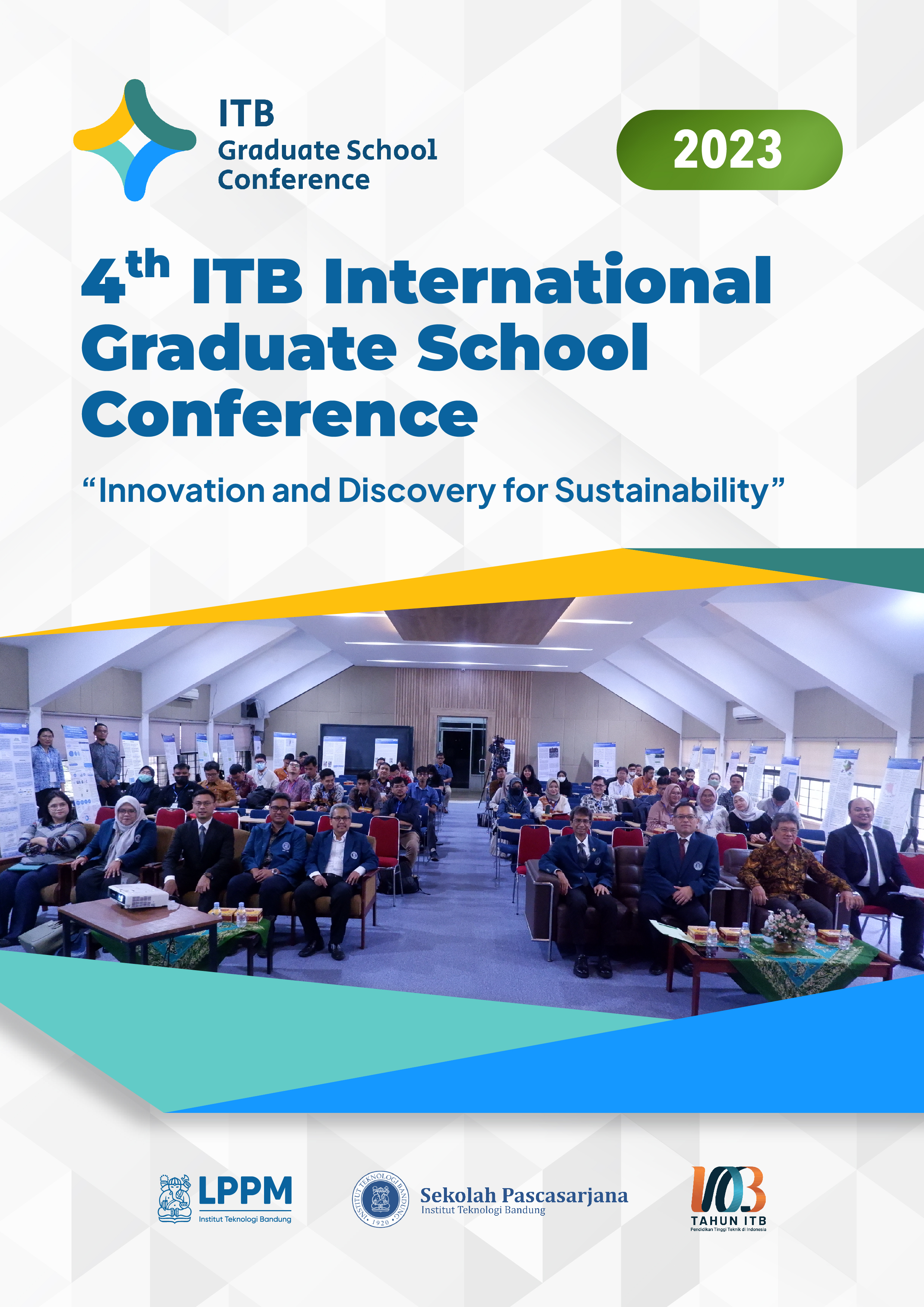VO2max Capacity and Prediction Model Development for Construction Workers
Keywords:
physical capacity, construction workers, prediction model VO2max, age, BMI, WCAbstract
The physical capacity (VO2max) of construction workers is an important factor in their work performance and safety. This study aimed to investigate the effect of age, body mass index (BMI), and waist circumference (WC) on VO2max, and developed a prediction model for VO2max of Indonesian construction workers. The study involved 45 healthy male construction workers who have no history of illness that affect physical capacity. VO2max was measured using a treadmill with the Bruce protocol. Data on age, BMI, and WC were collected and analyzed using multiple regression analysis to develop the prediction model. The average VO2max of workers was 3.98 ± 1.18 l/min. Age, BMI, and WC were found to affect VO2max of Indonesian construction workers. Age had a negative correlation with VO2max, while BMI and WC had a positive correlation. The results suggest that VO2max of younger construction workers is higher than that of older workers. The prediction model developed in this study using WC as a predictor can be used to estimate VO2max in Indonesian construction workers. This finding may have important implications for the health and safety of construction workers, as well as for the design of effective training and intervention programs to improve their physical capacity.
Downloads
References
L. L. Moberg, L.-K. Lunde, M. Koch, A. T. Tveter, and K. B. Veiersted, “Association between V̇O2max, handgrip strength, and musculoskeletal pain among construction and health care workers,” BMC Public Health, vol. 17, no. 1, p. 272, Dec. 2017, doi: 10.1186/s12889-017-4173-3.
J. Bugajska et al., “Physical Capacity of Occupationally Active Population and Capability to Perform Physical Work,” International Journal of Occupational Safety and Ergonomics, vol. 17, no. 2, pp. 129–138, Jan. 2011, doi: 10.1080/10803548.2011.11076883.
S. Hwang and S. Lee, “Wristband-type wearable health devices to measure construction workers’ physical demands,” Automation in Construction, vol. 83, pp. 330–340, Nov. 2017, doi: 10.1016/j.autcon.2017.06.003.
J. Bos, E. Mol, B. Visser, and M. H. Frings-Dresen, “The physical demands upon (Dutch) fire-fighters in relation to the maximum acceptable energetic workload,” Ergonomics, vol. 47, no. 4, pp. 446–460, Mar. 2004, doi: 10.1080/00140130310001643283.
M. Okhiria, A. Truszczyńska-Baszak, and A. Tarnowski, “Assessment of work-related fatigue in Polish physiotherapists and of its effect on their diagnostic accuracy and physiotherapy planning,” International Journal of Occupational Safety and Ergonomics, vol. 26, no. 2, pp. 406–412, Apr. 2020, doi: 10.1080/10803548.2019.1690215.
P.-O. Astrand, K. Rodahl, H. A. Dahl, and S. B. Stromme, Textbook of Work Physiology, 4th ed. McGraw-Hill, 2002.
S. L. Merkus, L.-K. Lunde, M. Koch, M. Wærsted, S. Knardahl, and K. B. Veiersted, “Physical capacity, occupational physical demands, and relative physical strain of older employees in construction and healthcare,” Int Arch Occup Environ Health, vol. 92, no. 3, pp. 295–307, Apr. 2019, doi: 10.1007/s00420-018-1377-5.
H. Daneshmandi, A. R. Fard, and A. Choobineh, “Estimation of Aerobic Capacity and Determination of Its Associated Factors Among Male Workers of Industrial Sector of Iran,” International Journal of Occupational Safety and Ergonomics, vol. 19, no. 4, pp. 667–673, Jan. 2013, doi: 10.1080/10803548.2013.11077014.
T. Matsuo, R. So, and M. Takahashi, “Workers’ physical activity data contribute to estimating maximal oxygen consumption: a questionnaire study to concurrently assess workers’ sedentary behavior and cardiorespiratory fitness,” BMC Public Health, vol. 20, no. 1, p. 22, Dec. 2020, doi: 10.1186/s12889-019-8067-4.
L. T. Wier, A. S. Jackson, G. W. Ayers, and B. Arenare, “Nonexercise Models for Estimating V̇O2max with Waist Girth, Percent Fat, or BMI,” Medicine & Science in Sports & Exercise, vol. 38, no. 3, pp. 555–561, Mar. 2006, doi: 10.1249/01.mss.0000193561.64152.
G. J. M. Vandersmissen, R. A. J. R. Verhoogen, A. F. M. Van Cauwenbergh, and L. Godderis, “Determinants of maximal oxygen uptake (VO2 max) in fire fighter testing,” Applied Ergonomics, vol. 45, no. 4, pp. 1063–1066, Jul. 2014, doi: 10.1016/j.apergo.2014.01.001.
S. Brighenti-Zogg et al., “Physical Workload and Work Capacity across Occupational Groups,” PLoS ONE, vol. 11, no. 5, p. e0154073, May 2016, doi: 10.1371/journal.pone.0154073.
N. C. Dey, A. Samanta, and R. Saha, “A Study of the Workload of Underground Trammers in the Ranigang Coal Field Area of West Bengal, India,” International Journal of Occupational Safety and Ergonomics, vol. 12, no. 4, pp. 399–407, Jan. 2006, doi: 10.1080/10803548.2006.11076700.
J. A. Prieto, V. González, M. Del Valle, and P. Nistal, “The Influence of Age on Aerobic Capacity and Health Indicators of Three Rescue Groups,” International Journal of Occupational Safety and Ergonomics, vol. 19, no. 1, pp. 19–27, Jan. 2013, doi: 10.1080/10803548.2013.11076963.
A. S. Oestergaard, N. Gupta, T. F. Smidt, L. F. Sandal, and K. Søgaard, “The objectively measured physical work demands and physical capacity of offshore wind technicians: An observational field study,” Applied Ergonomics, vol. 102, p. 103716, Jul. 2022, doi: 10.1016/j.apergo.2022.103716.
N. J. Hanson, C. M. Scheadler, T. L. Lee, N. C. Neuenfeldt, T. J. Michael, and M. G. Miller, “Modality determines VO2max achieved in self-paced exercise tests: validation with the Bruce protocol,” Eur J Appl Physiol, vol. 116, no. 7, pp. 1313–1319, Jul. 2016, doi: 10.1007/s00421-016-3384-0physical capacity


